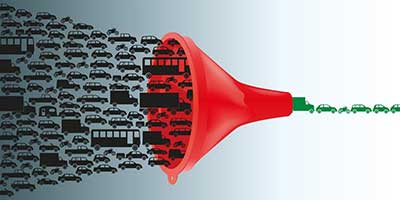Relevance: GS-2: Important international institutions, agencies and fora- their structure, mandate.
Relevance: GS-3: Technology, Economic Development, Biodiversity, Environment, Security and Disaster Management.
Key Phrases: World Health Organization, United Nations Environment Programme, Noise, Blazes, loudness, amplitude, sound pressure level, CPCB.
Why in News?
- Recently a report commissioned by the United Nations Environment Programme on the environmental challenges posed by noise, wildfires and the disruption of biological rhythms of plants, animals and ecological cycles became controversial on account of the mention of a single city, Moradabad.
DO YOU KNOW?
- Founded by Rustam Khan, the governor of Katehar under the Mughal emperor Shahjahan, Moradabad is named after prince Murad Bakhsh, the youngest son of the emperor.
What was the controversy?
- The first chapter of the report, called Frontiers 2022: Noise, Blazes and Mismatches, deals with noise.
- It compiles studies about noise levels in several cities around the world and illustrates a subset of 61 cities and the range of dB (decibel) levels that have been measured.
- Delhi, Jaipur, Kolkata, Asansol and Moradabad are the five Indian cities mentioned in this list and Moradabad in Uttar Pradesh was shown as having a dB range from 29 to 114.
- At a maximum value of 114, it was the second-most-noisiest city in the list. The first was Dhaka, Bangladesh at a maximum value of 119 dB.
- While road traffic, industry and high population density are well-known factors associated with high dB levels, the inclusion of Moradabad appeared strange because similar studies in the past had never suggested it to be an unusually noisy city.
- The noise indicators that the different studies/reports included weren’t “necessarily consistent/harmonised and it was generated simply as an example of the spread of noise values that different people have observed in different cities over time in different places.”
- Hence the report about Moradabad to be the ‘second-noisiest city’ was incorrect because the list of cities whose values were illustrated were only indicative.
Do you Know?
- Sound waves are vibrations of air molecules carried from a noise source to the ear.
- Sound is typically described in terms of the loudness (amplitude) and the pitch (frequency) of the wave.
- Loudness (also called sound pressure level, or SPL) is measured in logarithmic units called decibels (dB).
- Frequency of a sound wave is expressed in cycles per second (cps), but hertz (Hz) is more commonly used (1 cps = 1 Hz).
- The human eardrum is a very sensitive organ with a large dynamic range, being able to detect sounds at frequencies as low as 20 Hz (a very low pitch) up to about 20,000 Hz (a very high pitch).
- The pitch of a human voice in normal conversation occurs at frequencies between 250 Hz and 2,000 Hz.
Why are measurements of noise important?
- Guidelines by WHO:
- The latest 2018 World Health Organization (WHO) guidelines established a health-protective recommendation for road traffic noise levels of 53 dB.
- Effect on Health:
- Night-time noise disturbs sleep and affects well-being the following day.
- Estimates suggest that in Europe 22 million and 6.5 million people suffer from chronic noise annoyance and sleep disturbance, respectively.
- The elderly, pregnant women and shift workers are among those at risk of noise-induced sleep disturbance.
- Noise-induced awakenings can trigger a range of physiological and psychological stress responses because sleep is necessary for hormonal regulation and cardiovascular functioning.
- Traffic noise exposure is a risk factor for the development of cardiovascular and metabolic disorders such as elevated blood pressure, arterial hypertension, coronary heart disease and diabetes.
What is India doing About Noise pollution?
- The Central Pollution Control Board (CPCB) is mandated to track noise levels, set standards as well as ensure, via their State units, that sources of excessive noise are controlled.
- The agency has a manual monitoring system where sensors are installed in major cities and few cities have the facility to track noise levels in real time.
- The CPCB also measures noise levels before and after Diwali in major cities, to publicise the impact of firecrackers.
- Laws:
- Earlier, noise pollution and its sources were addressed under the Air (Prevention and Control of Pollution) Act, 1981.
- They are now, however, regulated separately under the Noise Pollution (Regulation and Control) Rules, 2000.
- Additionally, noise standards for motor vehicles, air-conditioners, refrigerators, diesel generators and certain types of construction equipment are prescribed under the Environment (Protection) Rules, 1986.
- Noise emanating from industry is regulated by State Pollution Control Boards / Pollution Control Committees (SPCBs / PCCs) for states / Union territories under the Air (Prevention and Control of Pollution) Act, 1981.
Conclusion
- Higher levels of noise are hazardous and it is also difficult to make them escape in a closed environment.
- The increased levels of noise pollution in the environment have made it an urgent need to create awareness about the causes, effects, and prevention of noise pollution.
- The higher level of noise should be reduced at home and also at a workplace. People should be educated about the hazards of noise pollution.
- Let’s all make it our responsibility to prevent the environment from further noise pollution and make the earth a better place to live in.
Sources: The Hindu
Mains Question:
Q. Why was the inclusion of Moradabad as a noisy city cause for controversy? What are the impacts of noise pollution on human health? (Words 250).








